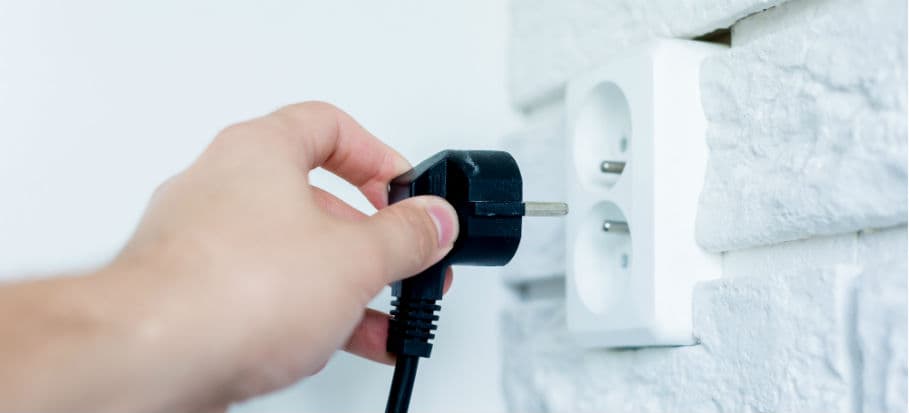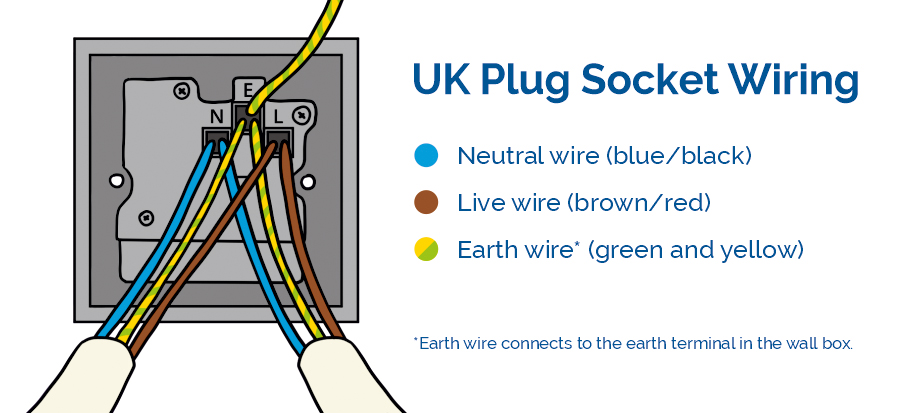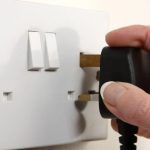
If an electrical outlet no longer holds a plug as it should, this is a reason for worry. So, before you have an electrical accident on your hands, you should replace the receptacle as soon as possible. Changing an electrical outlet could be done by a non-electrician, as it doesn’t require any special skills or knowledge. In this blog post, the Fantastic Services team will explain how to change a plug socket by yourself.
- Signs of a faulty outlet
- Reasons for a faulty outlet
- Tools you need
- How to replace an outlet
So, if you:
- Are comfortable making small electrical repairs by yourself;
- Wish to replace an old socket with a new one;
- Want to know how to properly wire a socket,
Then this post is for you!
Signs that you have a faulty outlet
If there is a problem with your electrical outlet, there will be some obvious signs. If you notice any of the following, it’s time you do something about it.
- The socket is not working. If your outlet is not working, or you notice the power to your appliance flickering, it’s a sign that your socket needs replacement. Still, check your other outlets just in case. The problem might be the general power supply.
- Burned or melted panel. If you notice the plastic cover panel melting, or if there are dark burn marks on it or the wall surrounding the outlet, you should do something about it as soon as possible. The socket could soon become an electrical fire hazard.
- The plug socket is hot. Maybe the panel isn’t melted or burned, but every time you touch it, it’s hot, even when you don’t have anything plugged in it. Basically, it’s still early, but soon you might start smelling melted plastic, or smoke. Don’t let it get too late. Act quickly.
- You smell smoke or hear buzzing. If you don’t pay general attention to your outlets, then you should trust your other senses. If the situation is becoming critical, you would probably smell smoke, or hear sparks buzzing from the outlet.
- Plugs don’t stay put. If you plug in an appliance in your outlet, but the plug easily slips off, then you have a faulty socket. Outlets are supposed to keep the plugs snugly inside. If they don’t, you have to quickly do something about it.
Common reasons for a faulty electrical socket
There are a few main reasons why you might have a faulty plug socket. For example:
Overloaded circuit
Electrical flow gets interrupted due to a blown fuse or a malfunctioning circuit breaker. This can cause an overload (too much current traveling through a wire), which in turn heats up the wire and can cause a meltdown. Thus, the cover panel will heat up, melt or get burned.
Open circuit interruptions
If there is an opening in the circuit, the wire is attached to, the electrical current can’t flow to its destination. This means that the circuit gets interrupted. Because of this, the power outlet might cause your appliance to experience power flickers, or the outlet might not work at all.
Short circuits
A short circuit occurs when an unintended connection forms with a ground wire, or another object that has a connection with the earth. This causes the electricity to run off the circuit, tripping a breaker and producing a spark. If this happens, your house’s electrical box will turn off the electrical supply to prevent further complications.

Visit the main website for price rates on our professional electricians!
How to replace an electrical outlet
Tools you need:
- Replacement receptacle;
- Replacement panel;
- Screwdrivers;
- Voltage tester;
- Wire strippers;
- Needle-nose pliers.
Time needed: 45 minutes.
Now that you’ve seen the signs of your faulty outlet and know what could be the cause of its malfunction, it’s time to get to work. Here is a quick guide on how to replace a plug socket, by the professional electricians from Fantastic Services.
- Turn off the power.
The first thing you have to do is to turn off the power supply to the plug socket. Never do any electrical work if the power is still on! Once you turn off the power, use the voltage tester to make sure there is no energy flowing through the socket.
- Remove the cover panel.
Use the screwdriver to unscrew the bolts that hold the plastic cover panel in place. Once you pull it out of the wall, you will see the wires that are attached to it. There should be three wires of different colours – blue, brown, and green and yellow striped. If your building was wired before 2006, the electrical wiring colours can be red, black, and green and yellow striped.
- Remove the wires.
Carefully inspect the old front of the socket to see where the wires are attached. Loosen the terminal screws and release the wires. You might see that the wires of the same colours are twisted together. The end of the twisted wires shouldn’t be sticking out, worn, or damaged. If you see this, cut around 5 mm of each wire and remove the sleeving. Prepare the exposed cords to be installed into a new socket panel by twisting them together with the needle-nose pliers.
- Attach the new socket.
You now have to connect the wires to the terminals of the new front panel. It’s important to install the wires into the right terminals. On the back of your new socket, you should see three terminals with different labelling. (N) for neutral, (L) for live, and (E) for earth. Attach the blue/black wire to the (N) terminal, the brown/red wire to the (L) terminal and the yellow and green striped one to the (E) terminal. Tighten the terminals up.

- Push the new socket back into place.
With that done, all you have left to do is to push the new plug socket e back into the wall and screw it securely in place.
- Turn the power supply on.
Once you finish the installation, place the breakers back to the live position and test the socket with the voltage meter. If done correctly, the socket should work perfectly.
Rely on a professional handyman to do the job for you
Replacing an electrical outlet is not a difficult task. As long as you know what you’re doing, this electrical job could be done yourself. However, from our experience, we’ve noticed that a lot of people prefer not to get their hands on electrical DIY because of the dangers related to it. If this applies to you, there’s no shame in asking for help from a professional. The Fantastic Services team is always ready to lend a hand. Get a certified electrician, today!
Need a professional electrician?
Fantastic Services is here for you!
- We’re certified:

Takeaways
- If you have a faulty electrical outlet, there would no doubt be signs – melted plastic panel, the smell of smoke, or flickering power. If you notice any of those, you have to replace your outlet.
- The most common cause of a faulty electrical outlet has to do with the circuits.
- Always remember to turn off the power supply when replacing an electrical outlet.
Electrical outlets are important and as a homeowner, you need to be sure they are in working order. If you don’t have the time, or the desire to do this small repair by yourself, you could always rely on professional electricians. You can get in touch with the Fantastic Services team by phone, email and our simple online booking form.
***
Have you ever had a faulty plug socket in your home? How did you fix it? Tell us in the comments below!
Image source: shutterstock / BOKEH STOCK
